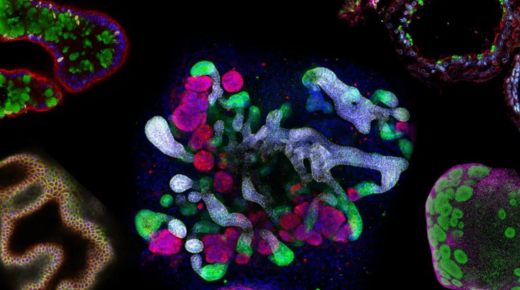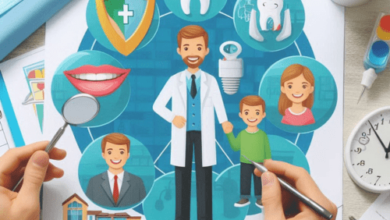
Pediatric neurology is a specialized field that focuses on diagnosing and treating neurological disorders in children. Advances in this field have led to innovative treatments that significantly improve the quality of life for young patients. This article explores the latest advancements in pediatric neurology, highlighting cutting-edge treatments and therapies that offer hope for children with neurological conditions.
Understanding Pediatric Neurology
Common Neurological Disorders in Children
Pediatric neurology encompasses a wide range of disorders affecting the nervous system in children. Some of the most common neurological conditions include:
Epilepsy:
- Description: A disorder characterized by recurrent seizures due to abnormal electrical activity in the brain.
- Impact: Can affect cognitive development, behavior, and overall quality of life.
Cerebral Palsy:
- Description: A group of disorders that affect movement and muscle tone, often caused by damage to the developing brain.
- Impact: Leads to varying degrees of physical disability, coordination issues, and sometimes cognitive impairments.
Autism Spectrum Disorder (ASD):
- Description: A developmental disorder that affects communication, behavior, and social interactions.
- Impact: Can range from mild to severe, affecting various aspects of a child’s life.
Neuromuscular Disorders:
- Description: Conditions that affect the muscles and the nerves that control them, such as muscular dystrophy.
- Impact: Leads to progressive muscle weakness and loss of function.
Headaches and Migraines:
- Description: Recurrent headaches or migraines that can significantly impact daily activities.
- Impact: Causes pain, discomfort, and can affect school performance and social interactions.
Importance of Early Diagnosis
Early diagnosis of neurological disorders is crucial for effective treatment and better outcomes. Pediatric neurologists use various diagnostic tools and techniques to identify conditions early.
Diagnostic Tools:
- Neuroimaging: MRI and CT scans to visualize the brain and spinal cord.
- Electroencephalogram (EEG): Measures electrical activity in the brain to detect abnormalities.
- Genetic Testing: Identifies genetic mutations associated with neurological disorders.
Benefits of Early Diagnosis:
- Timely Intervention: Enables early treatment, which can improve prognosis and quality of life.
- Customized Care Plans: Allows for tailored treatment strategies to meet the specific needs of the child.
- Parental Support: Provides families with information and resources to manage the condition effectively.
Innovative Treatments in Pediatric Neurology
Advanced Medications
Antiepileptic Drugs (AEDs)
Advancements in antiepileptic drugs have significantly improved the management of epilepsy in children.
Newer AEDs:
- Mechanism: Target specific pathways involved in seizure activity.
- Benefits: Fewer side effects, better seizure control, and improved quality of life.
Examples:
- Levetiracetam (Keppra): Effective for various types of seizures with minimal side effects.
- Lamotrigine (Lamictal): Useful for treating partial and generalized seizures, with mood-stabilizing properties.
Targeted Therapies for Neuromuscular Disorders
Innovative treatments for neuromuscular disorders focus on targeting the underlying genetic causes.
Gene Therapy:
- Mechanism: Involves delivering a healthy copy of a defective gene to restore normal function.
- Example: Zolgensma for spinal muscular atrophy (SMA), which replaces the faulty SMN1 gene.
Exon Skipping:
- Mechanism: Uses synthetic oligonucleotides to skip faulty exons in the genetic code, allowing for the production of functional proteins.
- Example: Eteplirsen for Duchenne muscular dystrophy (DMD).
Neuromodulation Techniques
Vagus Nerve Stimulation (VNS)
VNS is a surgical treatment for epilepsy that involves implanting a device to stimulate the vagus nerve.
Procedure:
- Implantation: A small device is implanted under the skin in the chest, with a wire connected to the vagus nerve in the neck.
- Stimulation: The device sends regular electrical impulses to the brain via the vagus nerve.
Benefits:
- Seizure Reduction: Reduces the frequency and severity of seizures.
- Improved Quality of Life: Can lead to better cognitive and emotional well-being.
Deep Brain Stimulation (DBS)
DBS is used to treat movement disorders and certain types of epilepsy by delivering electrical impulses to specific brain regions.
Procedure:
- Implantation: Electrodes are placed in targeted areas of the brain, connected to a pulse generator implanted in the chest.
- Stimulation: Electrical impulses are delivered to modulate abnormal brain activity.
Benefits:
- Symptom Control: Effective for reducing tremors, rigidity, and other movement-related symptoms.
- Personalized Settings: Stimulation parameters can be adjusted to meet individual needs.
Advanced Surgical Techniques
Minimally Invasive Neurosurgery
Minimally invasive techniques offer safer and more effective options for treating pediatric neurological disorders.
Techniques:
- Endoscopic Surgery: Uses small incisions and an endoscope to access and treat brain and spinal conditions.
- Laser Ablation: Uses laser technology to precisely target and remove abnormal brain tissue.
Benefits:
- Reduced Risk: Minimizes trauma to surrounding tissues and reduces the risk of complications.
- Faster Recovery: Shortens hospital stays and accelerates recovery times.
Hemispherectomy
A hemispherectomy is a surgical procedure that involves removing or disconnecting one hemisphere of the brain to treat severe epilepsy.
Procedure:
- Resection or Disconnection: The affected hemisphere is either partially or completely removed, or disconnected from the rest of the brain.
Benefits:
- Seizure Control: Highly effective for controlling seizures in cases of severe, intractable epilepsy.
- Developmental Improvement: Can lead to significant improvements in cognitive and motor functions.
Rehabilitation and Supportive Therapies
Physical and Occupational Therapy
Physical and occupational therapy are essential components of comprehensive care for children with neurological disorders.
Physical Therapy:
- Focus: Improves strength, coordination, and mobility.
- Techniques: Includes exercises, stretches, and activities to enhance motor skills.
Occupational Therapy:
- Focus: Enhances daily living skills and promotes independence.
- Techniques: Includes activities to improve fine motor skills, sensory processing, and adaptive techniques.
Benefits:
- Functional Improvement: Helps children achieve greater independence and participation in daily activities.
- Quality of Life: Enhances overall well-being and social integration.
Speech and Language Therapy
Speech and language therapy addresses communication challenges associated with neurological disorders.
Focus:
- Speech Production: Improves articulation and clarity.
- Language Development: Enhances comprehension and expression.
- Swallowing Disorders: Manages dysphagia and ensures safe eating.
Benefits:
- Communication Skills: Facilitates effective communication and social interactions.
- Academic Performance: Supports language development and academic success.
Innovative Assistive Technologies
Augmentative and Alternative Communication (AAC)
AAC devices help children with communication difficulties express themselves effectively.
Types of AAC:
- Low-Tech: Picture boards, communication books, and sign language.
- High-Tech: Speech-generating devices and communication apps.
Benefits:
- Enhanced Communication: Provides alternative ways to communicate for children with speech and language impairments.
- Increased Independence: Promotes self-expression and reduces frustration.
Robotics and Virtual Reality (VR)
Robotics and VR technologies are being integrated into pediatric rehabilitation to make therapy more engaging and effective.
Robotics:
- Applications: Robotic exoskeletons and assistive devices for gait training and movement therapy.
- Benefits: Improves motor function and provides consistent, repetitive training.
Virtual Reality:
- Applications: VR environments for cognitive and motor rehabilitation.
- Benefits: Enhances motivation and provides immersive, interactive therapy experiences.
Research and Future Directions
Genetic Research and Personalized Medicine
Advancements in genetic research are paving the way for personalized medicine in pediatric neurology.
Genetic Testing:
- Applications: Identifies genetic mutations associated with neurological disorders.
- Benefits: Enables tailored treatments based on individual genetic profiles.
Gene Editing:
- Technology: CRISPR-Cas9 and other gene-editing tools.
- Potential: Offers the possibility of correcting genetic defects and curing certain disorders.
Stem Cell Therapy
Stem cell therapy holds promise for treating a variety of neurological conditions in children.
Types of Stem Cells:
- Embryonic Stem Cells: Can differentiate into any cell type.
- Induced Pluripotent Stem Cells (iPSCs): Reprogrammed adult cells with similar potential to embryonic stem cells.
Applications:
- Regeneration: Potential to regenerate damaged neural tissues.
- Research: Provides insights into disease mechanisms and development of new treatments.
Advances in Neuroimaging
Innovative neuroimaging techniques are improving diagnosis and treatment planning.
Techniques:
- Functional MRI (fMRI): Measures brain activity by detecting changes in blood flow.
- Diffusion Tensor Imaging (DTI): Maps white matter tracts to assess brain connectivity.
Benefits:
- Detailed Insights: Provides a better understanding of brain structure and function.
- Precision Medicine: Enhances the ability to tailor treatments to individual needs.
Advances in pediatric neurology are transforming the diagnosis and treatment of neurological disorders in children. From innovative medications and neuromodulation techniques to advanced surgical procedures and rehabilitation therapies, these advancements offer new hope and improved outcomes for young patients. Continued research and development in this field promise even more breakthroughs, paving the way for personalized medicine and cutting-edge treatments that enhance the quality of life for children with neurological conditions. By staying informed about these innovations, healthcare providers and families can ensure that young patients receive the best possible care and support on their journey to better health.




